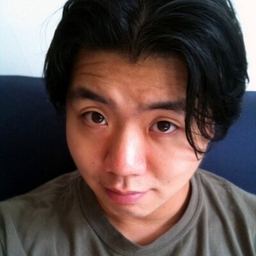
Charles Choi
Freelance Writer at Freelance
Mainly on https://t.co/6inOzc7jkC -- only here on Twitter occasionally because work sometimes requires me to look at tweets.
Articles
-
1 week ago |
livescience.com | Charles Choi
The Pacific Ocean is by far the world's largest ocean, more than five times wider than our moon. But why is the Pacific so big? Covering about 63 million square miles (163 million square kilometers) — more than 30% of Earth's surface — all of the world's continents could fit inside the Pacific basin, according to the National Oceanic and Atmospheric Administration (NOAA).
-
1 week ago |
inkl.com | Charles Choi
A map of the world. The predecessor of the Pacific Ocean was Panthalassa, or the Panthalassic Ocean, which was once Earth's only ocean. This world-spanning superocean existed when all of Earth's continental land was united in the supercontinent Pangaea. "Panthalassa was the proto-Pacific," Susanne Neuer, founding director of the School of Ocean Futures at Arizona State University in Tempe, told Live Science.
-
1 week ago |
principia-scientific.com | Charles Choi
Written by Charles Q Choi on June 15, 2025. Posted in Current News The first ancient human genomes analyzed from Papua New Guinea reveal that some of the early groups that lived there were completely genetically isolated from their neighbors, showing there was little intermarriage at multiple points in time, a new study findsNew Guinea is the second largest island in the world, after Greenland.
-
2 weeks ago |
spectrum.ieee.org | Charles Choi
Scientists have created cyborg embryos by implanting electrode arrays into the developing brains of frogs, mice, and salamanders. Although the researchers reject implants in human embryos as unethical, they suggest their technology might one day help study and treat neurodevelopmental conditions in children. The stretchable technology at the core of the electrode arrays could record brain activity while still being soft enough to accommodate the children’s growth.
-
2 weeks ago |
msn.com | Charles Choi
Continue reading More for You Continue reading More for You
Try JournoFinder For Free
Search and contact over 1M+ journalist profiles, browse 100M+ articles, and unlock powerful PR tools.
Start Your 7-Day Free Trial →X (formerly Twitter)
- Followers
- 4K
- Tweets
- 9K
- DMs Open
- No

New AI Project Aims to Mimic the Human Neocortex: The Gates-funded Thousand Brains Project from @numenta offers a fundamentally different approach to AI: by @cqchoi for @IEEESpectrum https://t.co/QMJ3eY7aqd

My new feature in @ieeespectrum not only explores the science of turning a planet into a computer, but is also paired with science fiction from acclaimed author @karlschroeder. Cool story, cool art, a piece unlike any I've done before. https://t.co/0QnCh5lvfe

Now at https://t.co/ffQ0NdHkcf
